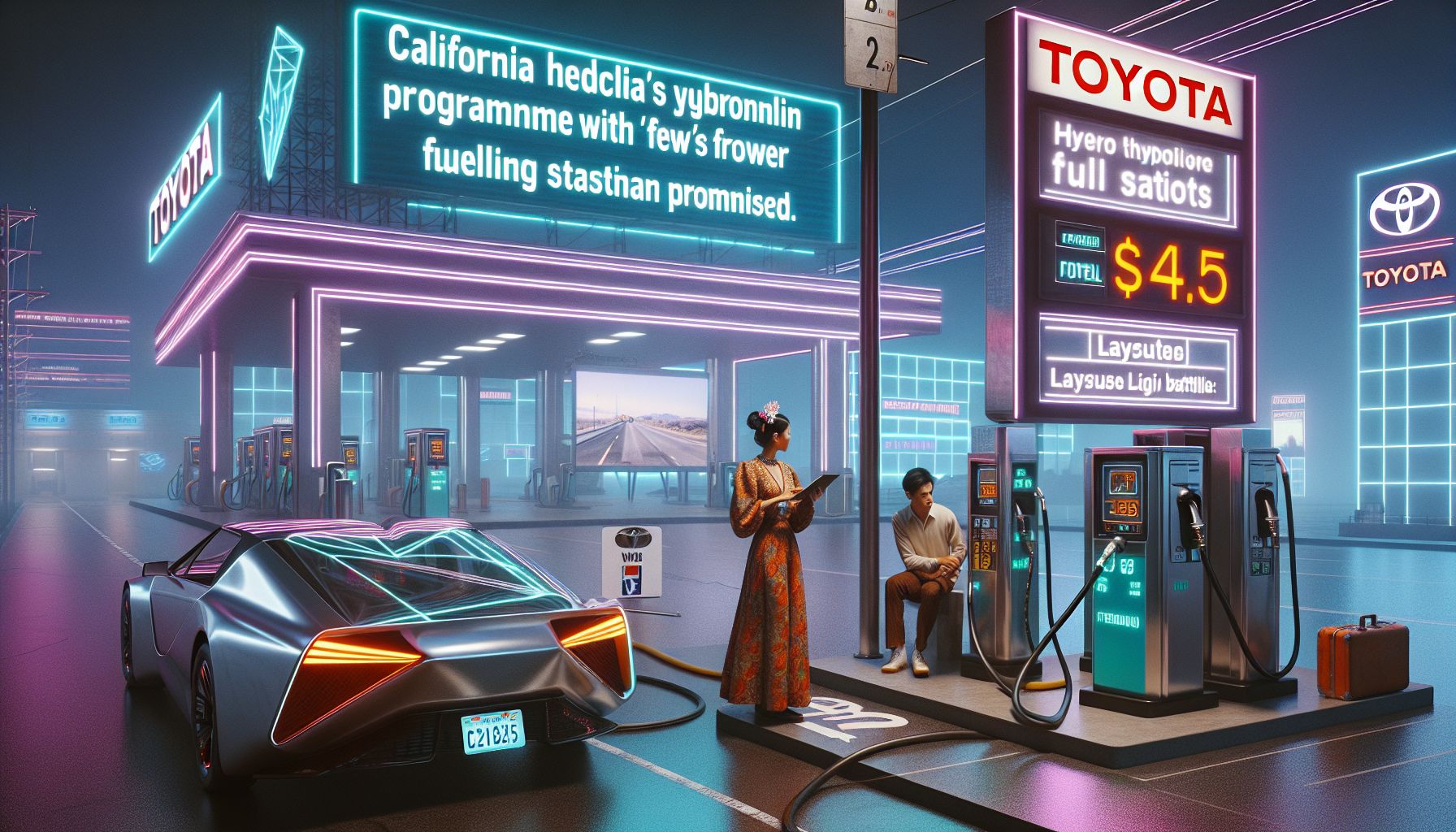The Great Hydrogen Highway Dream Hits a Speed Bump: California's $260M Reality Check

California, Tuesday, 19 November 2024.
As California’s ambitious hydrogen vehicle programme struggles with just 54 fuelling stations instead of the promised 200, drivers are facing a sobering reality. With fuel costs soaring to $15 per gallon equivalent and Toyota facing lawsuits, what started as a green transport revolution is teaching us valuable lessons about the gap between technological promise and infrastructure reality.
A Bumpy Road for Hydrogen Enthusiasts
I can’t help but feel for those early adopters of hydrogen vehicles in California. Imagine investing in a sleek, zero-emission car only to find that refuelling it is like hunting for a unicorn! With fewer than 60 operational stations, it’s no wonder drivers like Ryan Kiskis are calling the refuelling process a ‘gross waste of money’[2]. Despite the state’s $260 million investment in hydrogen infrastructure, the reality is starkly underwhelming—just 54 stations exist, far short of the aims set for 2025[2].
The Cost Conundrum
Now, let’s talk about the cost—$15 per gallon equivalent for hydrogen[2]. That’s a hefty price tag compared to good old gasoline. It’s like paying for a gourmet meal and getting a sandwich instead. This high cost per mile is driving some hydrogen car owners back to conventional petrol vehicles, questioning the green promise of hydrogen technology[2].
Legal Woes and Consumer Distrust
And then, there’s the legal drama. Toyota, a major player in this hydrogen venture, is now facing lawsuits from disgruntled customers who feel misled about the accessibility of hydrogen stations[2]. It’s a classic case of ‘overpromise and underdeliver,’ which is never a good look. This ongoing legal battle might have significant implications for the future of hydrogen vehicles in California and beyond[2].
Dreams Versus Reality
California’s aim to have 1.5 million zero-emission vehicles by 2025 is ambitious[4]. However, the current state of hydrogen infrastructure highlights the challenges of turning green dreams into reality. Despite the growth in sales of hydrogen vehicles, they still account for less than 1% of zero-emission cars in the state[1]. This discrepancy underscores the need for a more robust support system to make hydrogen a viable competitor in the zero-emission race.
What’s Next for Hydrogen Vehicles?
So, what’s next? The state and private suppliers need to ramp up efforts to expand infrastructure and reduce costs. Experts suggest more funding and regulation might just be the ticket[2]. Meanwhile, Toyota is exploring hybrid options, combining hydrogen with battery technology in upcoming models, which could offer a more practical solution for the future[3].
Conclusion: A Work in Progress
In the end, California’s hydrogen vehicle saga is a reminder of the gap between innovation and implementation. The technology holds promise, but its success hinges on more than just ambitious targets. As we watch this story unfold, it’s clear that the road to green transportation is paved with both challenges and opportunities. What do you think? Is hydrogen the future, or just a pit stop on the way to something better?